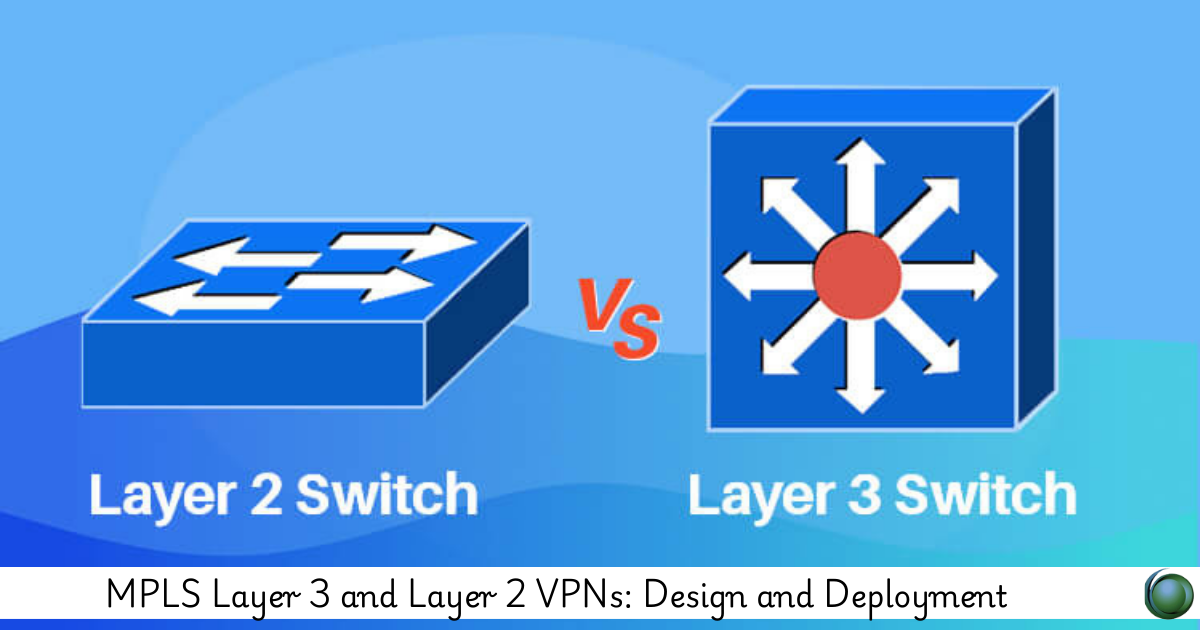Description
Introduction of Virtual Private Networks
Multiprotocol Label Switching (MPLS) has revolutionized how large-scale networks are designed and managed. One of its most powerful capabilities is supporting Virtual Private Networks (VPNs) across both Layer 2 and Layer 3 of the OSI model. This course covers the design, deployment, and best practices for MPLS Layer 3 and Layer 2 VPNs, enabling secure, efficient, and scalable network architectures for service providers and enterprises alike. Learn the differences between Layer 2 and Layer 3 MPLS VPNs and how to deploy them effectively in real-world scenarios.
Prerequisites
- Basic understanding of MPLS concepts and operations.
- Familiarity with networking protocols such as IP, Ethernet, and routing principles.
- Knowledge of VPN technologies and their use cases.
- Understanding of Layer 2 and Layer 3 network architectures.
Table of Contents
1. Introduction to MPLS VPNs
1.1 Overview of MPLS VPN Technology
1.2 MPLS VPNs: Layer 2 vs. Layer 3 Comparison
1.3 The Role of MPLS in Network Virtualization
2. MPLS Layer 3 VPN Design and Architecture
2.1 Layer 3 VPN Components and Functionality
2.2 Customer Edge (CE) and Provider Edge (PE) Routers
2.3 Virtual Routing and Forwarding (VRF) and its Role in Layer 3 VPNs
2.4 Route Target and Route Distinguisher Concepts
2.5 Layer 3 VPN Design Best Practices
3. MPLS Layer 2 VPN Design and Architecture
3.1 Layer 2 VPN Overview: Point-to-Point and Multipoint Connections
3.2 Ethernet VPN (EVPN) and Virtual Private LAN Services (VPLS)
3.3 Bridging and Switching in Layer 2 MPLS VPNs
3.4 MPLS Layer 2 VPN Deployment Considerations
3.5 Layer 2 VPN Design Best Practices
4. Deployment Models for MPLS VPNs
4.1 Enterprise MPLS VPN Deployment Scenarios
4.2 Service Provider MPLS VPN Deployment Models
4.3 Hybrid VPN Models and Use Cases
5. Configuring MPLS Layer 3 VPNs
5.1 Configuring VRF Instances on PE Routers
5.2 BGP MPLS VPN Configuration and Route Distribution
5.3 Routing between VRFs and MPLS Labels(Ref: Troubleshooting MPLS Networks: A Practical Approach)
6. Configuring MPLS Layer 2 VPNs
6.1 Configuring VPLS and Ethernet VPNs (EVPN)
6.2 MPLS Layer 2 VPN Signaling and Forwarding
6.3 Customer VLANs and Pseudowires
7. MPLS VPN Security Considerations
7.1 Securing MPLS VPN Traffic and Preventing Leaks
7.2 IPsec and Encryption in MPLS VPNs
7.3 Network Access Control and Authentication
8. Monitoring and Troubleshooting MPLS VPNs
8.1 Monitoring Tools for MPLS VPNs
8.2 Troubleshooting Layer 3 and Layer 2 MPLS VPN Issues
8.3 MPLS VPN Performance Tuning and Optimization
9. Advanced Topics in MPLS VPNs
9.1 MPLS Traffic Engineering and QoS for VPNs
9.2 VPN Scalability: Large-Scale Deployment Strategies
9.3 Integrating MPLS VPNs with SD-WAN
MPLS Layer 2 and Layer 3 VPNs are powerful tools that provide secure and reliable networking solutions for enterprises and service providers. Through this course, you’ll understand how to design, deploy, and manage MPLS Virtual Private Networks to optimize connectivity, scalability, and security in your network. Whether you are working on an enterprise network or providing services to clients, mastering MPLS Virtual Private Networks deployment is crucial for creating efficient and modern network infrastructures.







Reviews
There are no reviews yet.